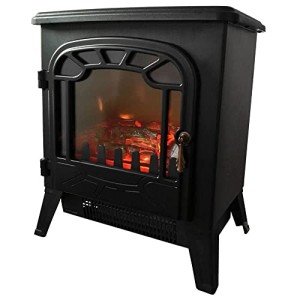Fireplaces in the UK: A Comprehensive Guide
Fireplaces have actually long been an integral part of British homes, offering both visual beauty and practical warmth. As the weather condition turns cold, the attraction of a cozy fire beckons, transforming any living area into a sanctuary. In this post, we will check out the numerous kinds of fireplaces offered in the UK, factors to consider for installation, maintenance tips, and responses to often asked questions about fireplaces.
Types of Fireplaces
When picking a fireplace for a UK home, numerous options are available, each with unique features and benefits. The following table sums up the primary kinds of fireplaces popular in the UK:
| Fireplace Type | Description | Pros | Cons |
|---|---|---|---|
| Open Hearth | Traditional fireplaces that burn wood or coal, providing a rustic feel. | Authentic ambiance; excellent heat distribution | Less energy-efficient; needs chimney maintenance |
| Gas Fireplaces | Usage natural gas or gas; can be direct vent or ventless. | Instant heat; simple to run; cleaner burning | Initial installation expense; may need gas line |
| Electric Fireplaces | Simulate a flame utilizing LED lights and offer heat through electricity. | Safe; simple to set up; no flue required | Less authentic; greater operating expense |
| Wood-burning Stoves | Closed-system fireplaces that burn logs, providing high performance. | High heat output; eco-friendly when using sustainable wood | Restricted aesthetic compared to open hearth |
| Bioethanol Fireplaces | Eco-friendly option that burns bioethanol, creating real flames. | No chimney required; versatile design options | Can be pricey to operate; limited heat output |
Advantages and disadvantages of Each Type
Open Hearth
- Pros:
- Provides character to any home.
- Effective heat distribution due to open flames.
- Cons:
- Less energy-efficient and more smoke than modern options.
- Needs routine cleaning and upkeep of the chimney.
Gas Fireplaces
- Pros:
- Easy to manage and run with the flick of a switch.
- Cleaner alternative with less soot accumulation.
- Cons:
- Requires a gas supply and setup expenses can be high.
- May not provide the exact same atmosphere as a traditional fire.
Electric Fireplaces
- Pros:
- Simple installation with no chimney or flue required.
- Comes in numerous styles, resembling traditional alternatives.
- Cons:
- Lacks the realism of genuine flames and can become costly with continuous usage.
Wood-burning Stoves
- Pros:
- Highly efficient and creates considerable heat.
- Eco-friendly resource when utilizing properly sourced wood.
- Cons:
- Requires extra area for log storage and regular upkeep.
Bioethanol Fireplaces
- Pros:
- Flexible positioning due to no requirement for traditional venting.
- Clean-burning and minimal impact on indoor air quality.
- Cons:
- Can be less economical for consistent use compared to gas or wood.
- Heat output is less effective for larger spaces.
Setup Considerations
When installing a fireplace in a UK home, numerous aspects should be taken into consideration:
- Building Regulations: Ensure compliance with regional building regulations and safety regulations.
- Chimney and Flue: Determine the need for a chimney or flue system based on the kind of fireplace selected.
- Ventilation: Proper ventilation is important for safety, particularly with gas, wood, and bioethanol options.
- Location: Consider the very best place for the fireplace to maximize heat distribution and visual appeal.
- Professional Help: Engaging a professional installer can make sure a safe and accurate setup tailored to the particular kind of fireplace.
Maintenance Tips
Routine upkeep of a fireplace is vital for both security and efficiency. Follow these guidelines to keep your fireplace in peak condition:
- Chimney Sweeping: Have your chimney professionally swept a minimum of as soon as a year to prevent clogs and reduce fire danger.
- Inspect for Damage: Regularly examine for leaks, cracks, or damage, specifically in gas and wood-burning fireplaces.
- Clean the Surroundings: Ensure the area around the fireplace is devoid of dust and combustible materials.
- Inspect Carbon Monoxide Detectors: Test detectors frequently, specifically in homes with gas-burning devices.
- Store Wood Properly: If utilizing a wood-burning range, shop wood in a dry location to reduce wetness content.
Often Asked Questions
What is the best kind of fireplace for a small room?
For small spaces, electric fireplaces or bioethanol models are often recommended due to their smaller size, safety features, and aesthetic appeals.
Are electric fireplaces cheaper to run than gas?
Electric fireplaces normally have a lower upfront cost, but depending upon electrical energy rates, they can be more expensive to operate long term compared to gas.
Do wood-burning ranges need a lot of upkeep?
While they do need some maintenance, such as cleansing and regular chimney sweeper, many house owners discover that modern wood-burning ranges are effective and fairly low maintenance compared to traditional open hearths.
Can I set up a gas fireplace myself?
While some house owners might try DIY installation, it is highly suggested to work with a professional for gas fireplace installations due to security issues and regulatory compliance.
How can I make the most of the heat output of my fireplace?
To make the most of heat output from any fireplace, think about the following:
- Keep doors and windows closed throughout use.
- Usage heat-efficient logs or fuels.
- Guarantee appropriate air flow around the fire.
- Utilize fans or blowers that can circulate warm air throughout the room.
Fireplaces stay a valued aspect within UK homes, offering warmth, appeal, and an inviting environment. Offered the variety of choices and their special functions, house owners can select the perfect fireplace to match their home while ensuring security and effectiveness. With Modern Fireplaces UK and a clear understanding of the installation requirements, anybody can delight in the charm and comfort of a fireplace for years to come.

